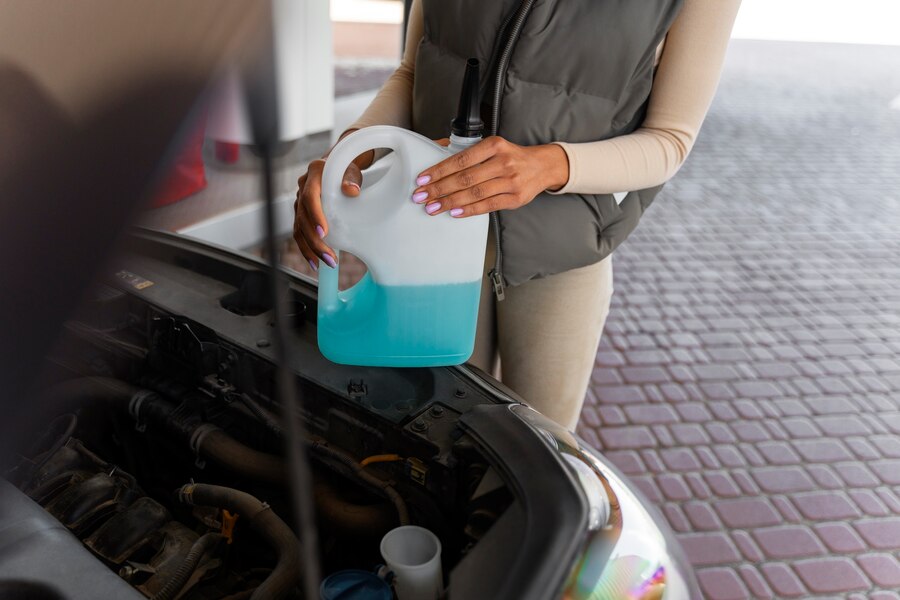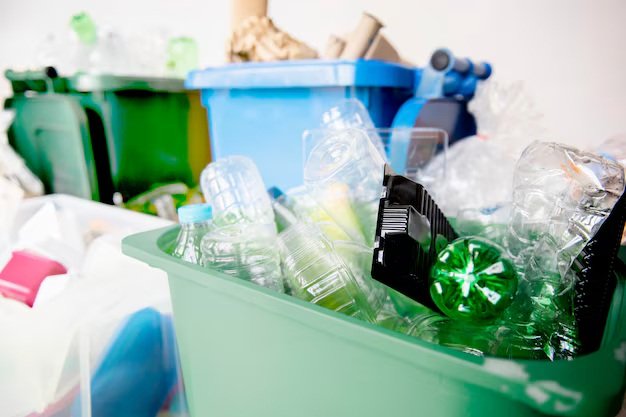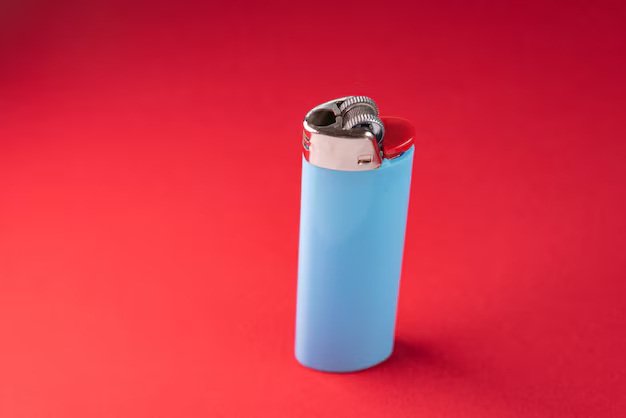How to Dispose of Antifreeze: A Complete Expert Guide
Antifreeze is one of those essential car fluids we rarely think about—until it’s time to drain and replace it. It keeps our engines running smoothly, preventing freezing in winter and overheating in summer. But here’s something most people don’t realise: if you don’t dispose of antifreeze properly, it can cause serious harm to the environment, wildlife, and even humans.
Many types of antifreeze contain toxic chemicals, and just a small amount can poison animals or contaminate water supplies. The good news? Safe disposal isn’t difficult—it just requires a little knowledge and responsibility. Whether you’re a DIY car owner or someone who relies on a mechanic, knowing how to handle used antifreeze safely is crucial.
In this guide, we’ll break everything down in simple, clear steps. You’ll get expert-backed advice, real-world experiences, and practical solutions to ensure you’re disposing of antifreeze in a way that’s safe for both people and the planet. Let’s take a responsible approach to vehicle maintenance, because every small action counts toward a cleaner, safer world.

In This Article
- Why Proper Antifreeze Disposal Matters
- Identifying the Type of Antifreeze You Have
- Step-by-Step Guide to Disposing of Antifreeze
- The Science Behind Antifreeze Recycling
- Expert Tips for Safe Antifreeze Handling
- Conclusion
Why Proper Antifreeze Disposal Matters
1. Environmental Impact
Antifreeze is made with chemicals like ethylene glycol or propylene glycol. These chemicals may keep your car running smoothly, but they’re toxic to nature. The Environmental Protection Agency (EPA) warns that just one gallon of antifreeze, if dumped irresponsibly, can contaminate thousands of gallons of water. That means lakes, rivers, and even drinking water sources can be polluted, harming fish and wildlife that rely on clean water to survive.
Case Study: Antifreeze Poisoning in Michigan
A small town in Michigan saw a drastic decline in local bird populations over a few years. Scientists discovered that contaminated water sources were to blame—many residents were unknowingly pouring used antifreeze into storm drains, which eventually seeped into nearby ponds and rivers. This incident highlights why proper disposal is so crucial.
| Year | Reported Animal Poisoning Cases (U.S.) |
|---|---|
| 2018 | 2,500 |
| 2019 | 3,100 |
| 2020 | 4,200 |
| 2021 | 5,000 |
2. Human and Animal Safety
Here’s something surprising: ethylene glycol, a common ingredient in antifreeze, has a sweet taste. Unfortunately, this makes it extremely dangerous for pets, wildlife, and even children who might accidentally ingest it. Just a small amount can cause kidney failure, brain damage, or even death. The Centres for Disease Control and Prevention (CDC) reports that antifreeze poisoning is a serious issue, with tragic consequences for animals and people alike.
A study published in 2024 highlighted the increasing cases of antifreeze poisoning in companion animals like cats and dogs, with the sweet taste of ethylene glycol being particularly attractive to these animals. While the research focuses more on domestic pets, similar poisoning risks extend to wildlife in urban areas. Just a small amount of antifreeze can be fatal to birds and small mammals, emphasising the need for improved detection and prevention strategies to protect vulnerable species.
3. Legal Consequences
Many states have strict laws about how antifreeze should be disposed of. Illegally dumping it isn’t just bad for the environment—it can also land you in serious legal trouble. Fines and penalties can be steep, making it a costly mistake.
Identifying the Type of Antifreeze You Have
Before you figure out how to dispose of antifreeze properly, you first need to know what kind you’re dealing with. Not all antifreezes is the same, and some types are more harmful than others. Taking the time to identify it correctly can make a big difference in how it’s handled and where it should go.
Types of Antifreeze:
- Ethylene Glycol-Based Antifreeze: This is the most common type, but it’s also the most toxic. It has a sweet taste that unfortunately makes it attractive to pets and wildlife, but even a small amount can be deadly if ingested. The good news? It’s recyclable, so don’t just dump it down the drain!
- Propylene Glycol-Based Antifreeze: This is considered a safer alternative because it’s less toxic. Some manufacturers even market it as “pet-friendly,” but don’t let that fool you—it still needs proper disposal.
- Used Antifreeze (Contaminated): Once antifreeze has been mixed with oil, heavy metals, or other chemicals, it becomes hazardous waste. At this point, it can’t be recycled like clean antifreeze and must go to a hazardous waste facility.
Learn More: How to Dispose of Motor Oil Properly
Step-by-Step Guide to Disposing of Antifreeze
1. Check Local Regulations
The rules for disposing of antifreeze vary depending on where you live. Some areas allow you to pour small amounts down the drain (with plenty of water), while others classify antifreeze as hazardous waste.
The best way to be sure? Call your local waste management facility or check the Environmental Protection Agency’s (EPA) website. They’ll tell you exactly where and how to dispose of antifreeze safely in your area.
Quick Tip: If you’re taking your car to a mechanic for a coolant flush, ask them if they recycle antifreeze. Many auto shops do it for free!
2. Recycle When Possible
Recycling used antifreeze is the best way to minimise environmental harm. Many auto repair shops, service stations, and recycling centres have systems to clean and reuse antifreeze.
A good friend of mine, who’s really into cars, used to drain antifreeze from his car into a bucket and toss it out without a second thought. He figured it was just a waste and didn’t really consider the bigger picture. After we had a conversation about the dangers of improper disposal—especially how it harms wildlife and contaminates water sources—he totally changed his tune. Now, he takes the used antifreeze to a local auto shop that recycles it for free. “It’s such an easy thing to do, and it feels good knowing I’m doing the right thing for the environment,” he told me.
Pro Tip: If you’re unsure where to take used antifreeze, search online for “antifreeze recycling near me” or call a local auto parts store—they often have helpful information.
3. Store Antifreeze Safely Until Disposal
If you’re not heading straight to a disposal facility, make sure to store your antifreeze properly:
- Use a clean, leak-proof container with a tight lid.
- Clearly label it “Used Antifreeze” so no one mistakes it for something else.
- Keep it away from kids and pets. Even a small amount can be deadly if ingested.
- Never mix antifreeze with other fluids, like oil or gas—it makes it impossible to recycle and could create a hazardous substance.
As I mentioned earlier, antifreeze has a sweet taste that can attract animals. Always store it out of reach!
4. Take It to a Hazardous Waste Facility If Necessary
If your antifreeze is contaminated—meaning it’s mixed with oil, rust, or other automotive fluids—it must be taken to a hazardous waste facility. These centres are equipped to handle toxic substances properly.
Where to Find a Facility:
- Check with your local waste management office.
- Search “hazardous waste disposal near me.”
- Look for community hazardous waste collection events in your area.
5. Consider Biodegradable Alternatives
Some companies now make biodegradable antifreeze, which is safer for the environment. While it still needs to be disposed of properly, it’s far less toxic than traditional ethylene glycol-based antifreeze.
Why Make the Switch?
- Less harmful to wildlife and water supplies.
- Still protects your engine just as well.
- Some brands are even recyclable!
Next Time You Buy Antifreeze: Look for propylene glycol-based options labelled “environmentally friendly” or “biodegradable.” They cost a little more, but they’re worth it for the planet.
The Science Behind Antifreeze Recycling
Recycling antifreeze isn’t just a good idea—it’s a necessity. The good news is that the process is easier than most people think, and advancements in science make it possible to turn this hazardous waste into a reusable resource.
How the Recycling Process Works
Recycling antifreeze involves three key steps: filtration, distillation, and chemical treatment. Let’s break each one down in plain English.
- Filtration – Cleaning Out the Gunk: Think of filtration as a giant coffee filter. Used antifreeze collects dirt, rust, and tiny metal particles from your car’s engine. Before it can be recycled, these impurities have to be removed. Special filtration systems strain out all the debris, leaving behind a cleaner fluid that’s easier to process.
- Distillation – Separating the Good from the Bad: Once the solid contaminants are gone, the antifreeze undergoes distillation. This process works like a high-tech water purifier. The antifreeze is heated until it turns into steam, separating the useful glycol (the part that keeps your car from freezing) from the unwanted chemicals and leftover water. The purified glycol is then collected and prepared for reuse.
- Chemical Treatment – Making It Safe Again: The final step is chemical treatment, which neutralises any harmful compounds left behind. This makes the antifreeze safe to use again and ensures that it won’t damage engines or the environment when properly disposed of.
Learn More: How to Dispose of Batteries Properly and Sustainably: An Expert Guide
Expert Tips for Safe Antifreeze Handling
1. Hazardous Waste Experts: This organization emphasizes the importance of proper antifreeze disposal to protect human health and the environment. They recommend storing used antifreeze in a clean, leak-proof container and taking it to a facility equipped to process hazardous materials. They also advise against mixing antifreeze with other substances, as this can complicate recycling and disposal.
2. AutoZon: AutoZone provides guidance on identifying the type of antifreeze and the appropriate disposal methods. They suggest using a secure, sealed container for storage and transporting the used antifreeze to a recycling center or hazardous waste facility. They also caution against pouring antifreeze down drains or onto the ground due to environmental hazards.
3. ACTenviro: ACTenviro offers a step-by-step guide for safely disposing of used antifreeze. They recommend checking local regulations, containing the antifreeze in a suitable container, avoiding mixing with other substances, and transporting it safely to a recycling or disposal facility. They also provide specifications for containers suitable for storing used antifreeze.
4. familyhandyman.com: Family Handyman provides practical advice on disposing of antifreeze safely. They suggest using a large drain pan to collect antifreeze, transferring it to a safe, sealable container, and disposing of it at a service station, recycling center, or auto parts shop. They also emphasize the importance of not pouring antifreeze down drains or into the yard.
Conclusion
Disposing of antifreeze responsibly isn’t just about following the law—it’s about protecting our planet, pets, and people. Whether you choose to recycle, take it to a hazardous waste facility, or switch to eco-friendly alternatives, every small action counts.
Actionable Steps You Can Take Today:
- Locate your nearest antifreeze recycling centre.
- Educate others about the dangers of improper disposal.
- Consider using biodegradable antifreeze for your next coolant change.
By taking these steps, you’re contributing to a cleaner, safer world. Have a personal experience with antifreeze disposal? Share your story in the comments below!







